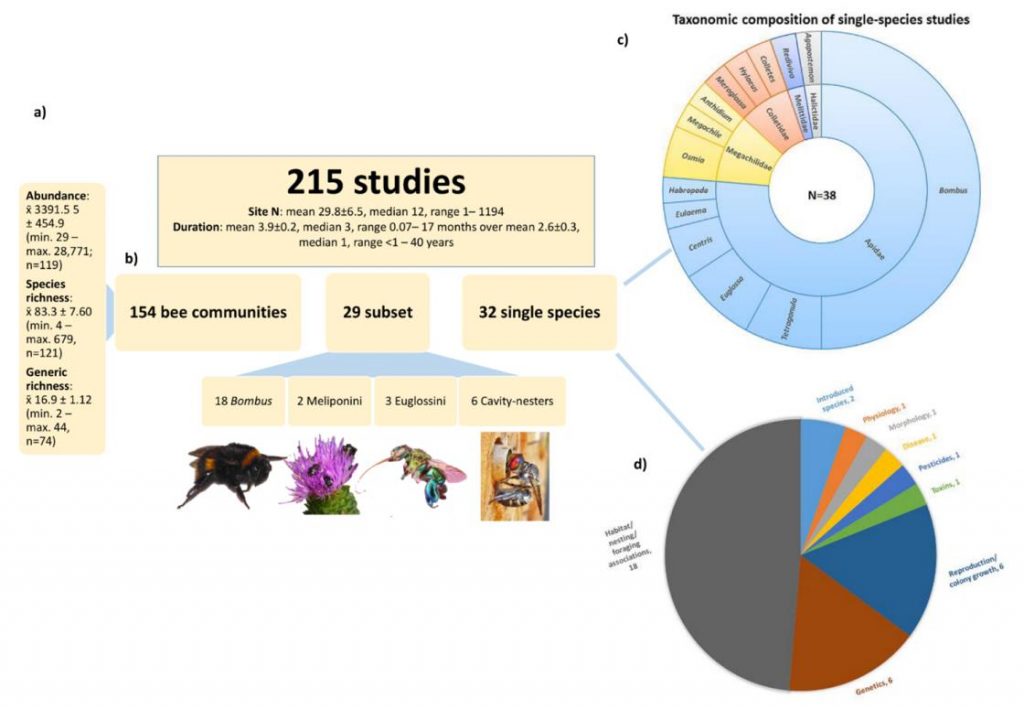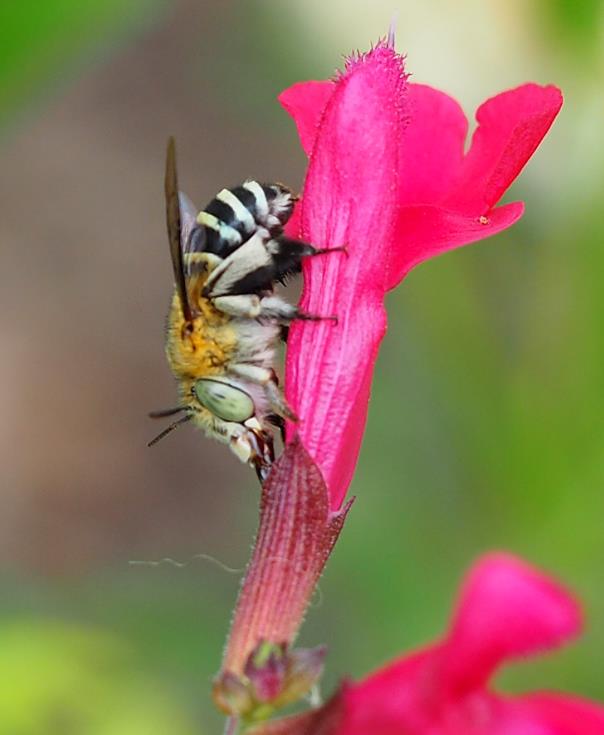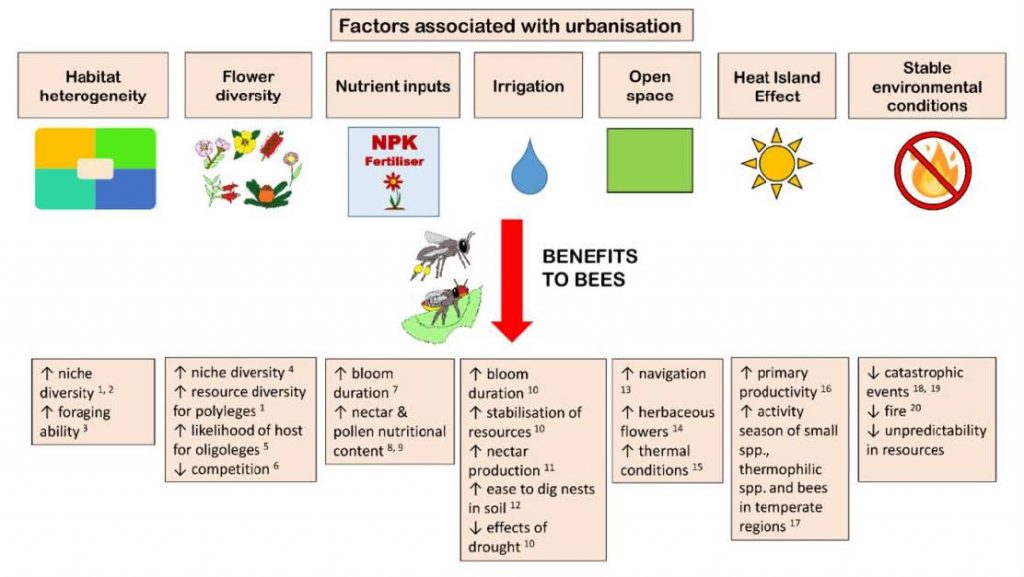Dr Kit Prendergast
As the global human population grows, the landscapes where we live, work and play – urban landscapes – are growing.
Urbanised landscapes represent novel habitats for bees – they are dominated by humans, have large portions of the land covered by hard surfaces like buildings, pavement and roads, and have a high diversity of flowers, but many of which are exotic. How are bees coping? I conducted the largest review to date – 215 studies! – to find out. This comprehensive review revealed that, compared with agricultural areas, urban areas tend to be better for bees.
I also found that bees can be more abundant in cities than even in natural landscapes, but there are fewer species. This relates to how cities may filter out some species, but boost the populations of those that can benefit from diverse flower plantings in gardens for example.
My analysis also identified things that help or harm bees in cities, with the following recommendations:
1) Retain, restore, revegetate and reconnect patches of remnant natural habitat throughout the urban matrix;
2) Encourage homeowners, gardeners, landscape managers, and nurseries to focus on flowers that have been demonstrated to be visited by wild bees in the region. Flowers should be primarily native species and ensure specialist (oligolectic) bee preferences are represented. Highly-attractive exotic flowers, that have low risk of becoming invasive, and offer quality and large volumes of nectar and pollen, especially outside the main flowering period of native flora, can also be included;
3) Retain flowering street trees, which provide food as well as nesting habitat for above-ground nesting species. Also maintain open habitat for these ectothermic insects that prefer sunny areas for foraging;
4) Leave patches of bare ground in greenspaces, and avoid plastic turf and largescale mulching of gardens. This provides habitat for ground-nesting bees;
5) Leave flowers and weeds on lawns, or even better, opt for flowering groundcover as a replacement for lawns.

Although this provided a major advance on how bees are faring under urbanisation, I also identified some major biases and knowledge gaps. For example, the majority of research has focussed on North America and Europe, and bumblebees dominated the studies on particular bee species.

Our identification of knowledge gaps allowed us to develop meaningful recommendations for future research efforts. This is vital because to mitigate global decline of bees, a greater understanding of how bees respond to urbanisation is required. Management strategies and restoration/landscaping strategies must be designed on the best available evidence.
Importantly, my review revealed that urban areas have the potential to successfully harbour native bees, with their attendant pollination services, but only if the foraging and nesting needs of the species are understood.
The article is freely available open-access : Prendergast, K.S., Dixon, K.W. & Bateman, P.W. (2022) A global review of determinants of native bee assemblages in urbanised landscapes. Insect Conservation and Diversity, 1– 21. Available from: https://doi.org/10.1111/icad.12569

